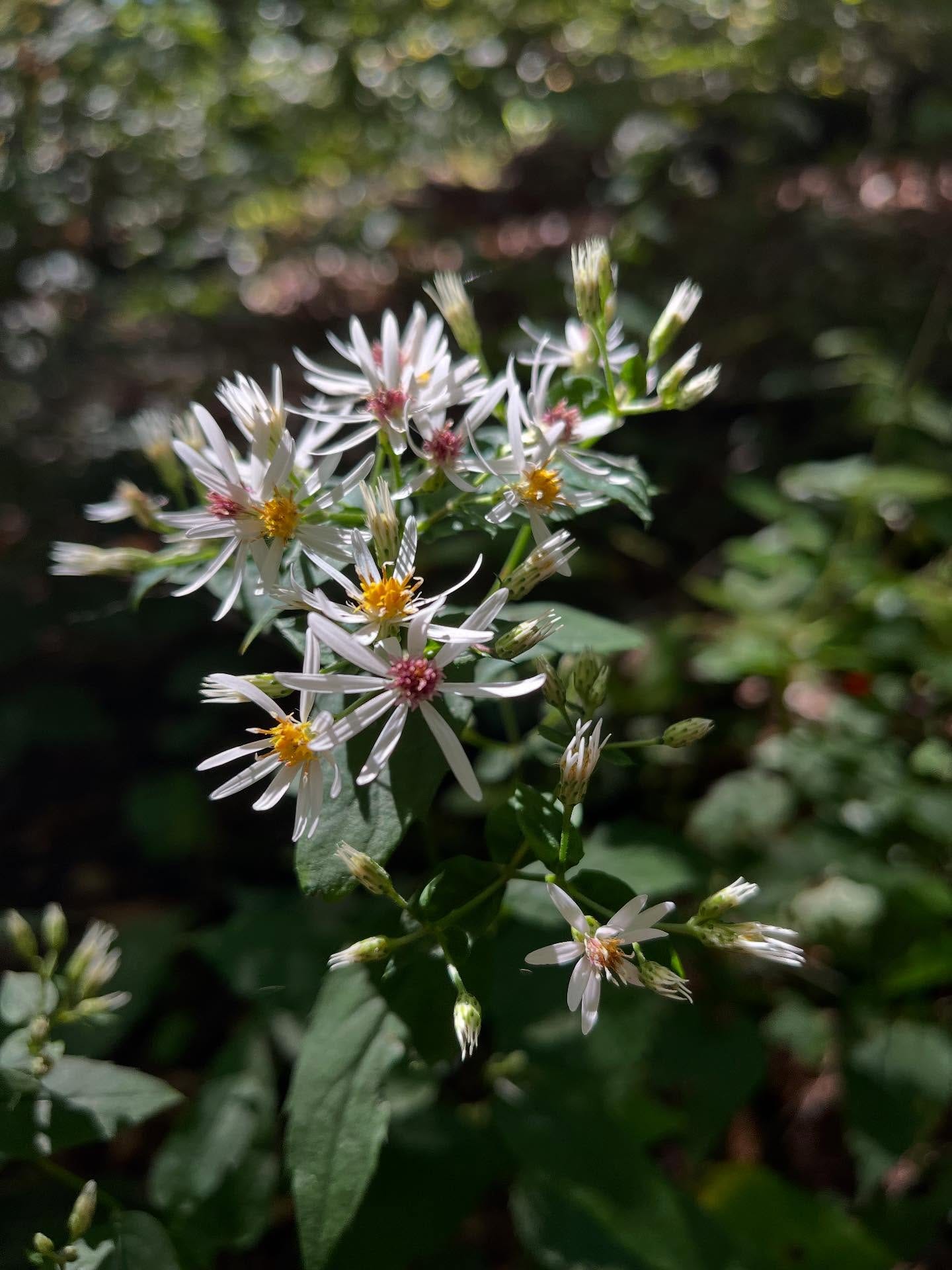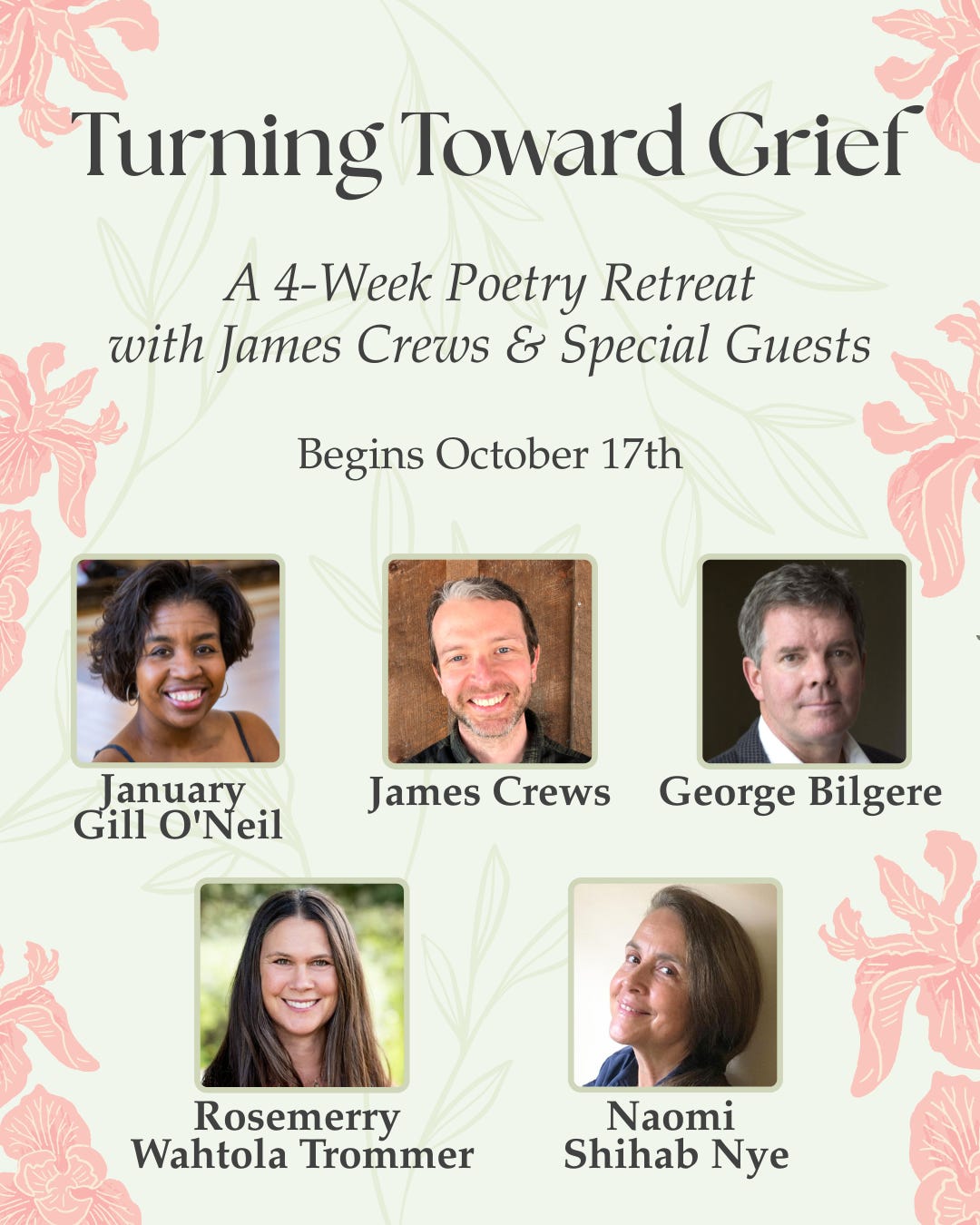Not the Only Thing
photo by James Crews
Not the Only Thing
This grief is not the only thing
in the room. There is a bed,
a chair, a glass of water, lip-marked
around the rim, proof that you
are here. There is a window,
and beyond that, tiny white blossoms
called asters after the distant stars
they resemble, now opening
at the edge of the woods. Don’t say:
Yes, but they mean the end
of summer, the waning of daylight
and pleasure. Beauty still orbits
every ache like a flock of blue azures,
small butterflies that hover over
a puddle, and do not think: Yes,
but the water will soon be gone.
They simply flex their wings and drink.
I always feel an overwhelming sense of melancholy when the season begins to tilt toward fall here in New England. It’s no surprise, either: I lost my mother and grandmother in autumn a few years ago, and my father died in early winter, just a few days before Christmas twenty-five years ago now. Yet even though I find myself tearing up more often at this time of year, growing nostalgic for loved ones who are no longer here, I also have to admit to feeling relief at the cooler temperatures and the promise of deeper rest that comes as we progress toward winter. Throughout my own grief journeys, I have had to learn the essential lesson that the life of feeling is not monolithic, but more of a braided thing. Though we may feel one emotion much more than another, they still arrive inextricably interwoven with each other, and it is usually our cultural conditioning that tells us we can only feel grief when grieving, whether that includes personal loss or the larger sorrows of the world. That same conditioning would also have us feel guilty for letting joy in the door at the same time, as if it were somehow inappropriate—as if we could control the rising up of our joy, any more than we can control a sudden ambush of grief. This year, as I walk the forest path lined with asters, I remind myself to take in their fragile brightness, recognizing the many varieties of those wildflowers, which are the harbingers of autumn. Yes, they may mean that one season is ending, but they also prove that beauty can find us even in the midst of our melancholy and despair—as a bar of sunlight sliding up and down and the wall, as a bumblebee wallowing delightedly in the pollen-rich center of a late-blooming anemone. The fact that our feelings arrive braided is good news, since it means we are often given the glimmering strand of something else to follow, too, to show us that grief (or anger, or outrage, or hurt) are not the only things in the room with us.
Invitation for Writing & Reflection: Borrow my phrase, “Grief is not the only thing in this room,” and see where those words lead you, staying open to any small glimmer of hope, joy, or beauty that calls to your attention.
If you enjoy these free weekly emails, please consider making a donation here, or become a member and support this offering on a monthly basis.
Please consider joining me for a gentle, supportive 4-week poetry retreat/webinar via Zoom that will focus on the braided nature of grief and joy with some of my absolute favorite poets and humans. Due to the generosity of this community, there are a number of half-off scholarships (just send an email to me to request more info). Starting on Fridays at 1pm ET on October 17th (all sessions recorded and shared). There will be time to write from poems and prompts by our guests, and poems and prompts from my new book, Turning Toward Grief (now available for pre-order from my local indie Battenkill Books or wherever you buy your books!). I can't wait to be in conversation with these poets and each of you:
https://www.eventbrite.com/e/1549101216439?aff=oddtdtcreator




Grace strand in grief’s braid?
Yes, embedded, unbidden.
There’s room for both, more?
“…the promise of deeper rest that comes as we progress toward winter.”
You articulated one more reason why autumn is my favorite season.
A lovely piece, James.